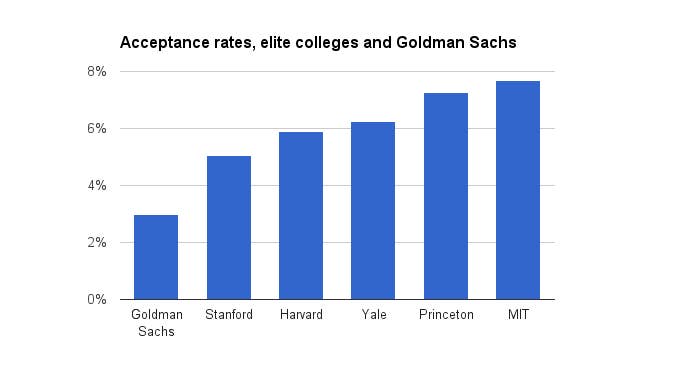
Despite a wave of trend stories about finance losing out in prestige to technology and the persistently poor reputation of investment banks following the financial crisis, a lot of people still want to work at Goldman Sachs, and very few get the opportunity to do so.
In a presentation given at a Credit Suisse conference in South Florida, Goldman Sachs Chairman and Chief Executive Officer Lloyd Blankfein said that "nearly 270,000" people applied for 8,300 open positions at the company, and that, of the roughly 3% of those that got job offers, "nearly 90%" accepted them. "We remain the employer of choice in our industry," Blankfein said.
While it's not a perfect comparison, Goldman is in some sense harder to get into than the elite schools that it draws on for many of its bankers and traders. Harvard admitted 5.9% of its applicants for the class of 2018, while Stanford admitted just 5.1%. Yale's acceptance rate was just over 5%, with Princeton and the Massachusetts Institute of Technology both taking in just under 8% of applicants.
Last year, Goldman said its analyst program, which recruits a few hundred people directly from colleges and universities, made job offers to 4% of its applicants.
The difficulty of getting a job at Goldman comes despite the bank's pay levels staying relatively low, alongside revenues that are basically unchanged over the past years. Goldman spent $12.7 billion on employee compensation in 2014, the bank said, or 37% of its total revenues. In 2007, Goldman's $20.19 billion in compensation expense was 44% of its total revenues.

